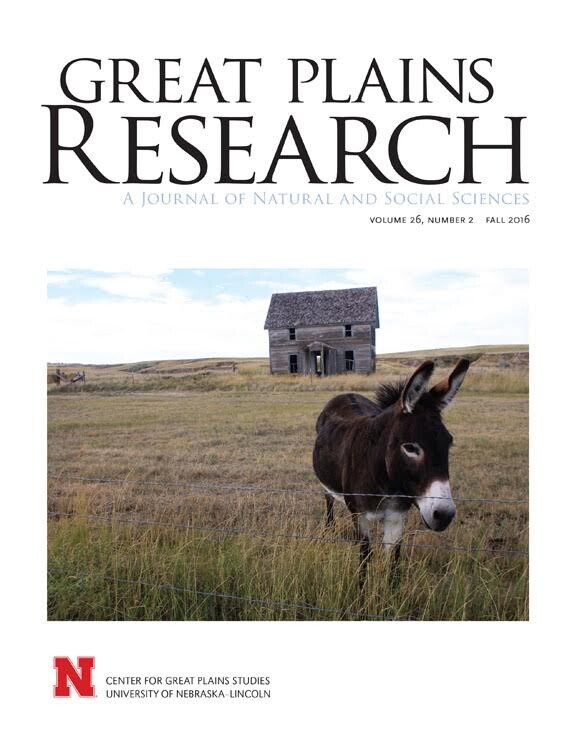
In America, every region comes with its own stereotypes. Southerners are polite and hospitable. New Englanders are aloof. Those in the Great Plains are friendly and hardworking. But are these stereotypes true? Do the people of the Great Plains have a distinct character and identity? And if so, can scientific research offer proof?
John R. Hibbing, professor of political science and psychology, seeks to bring clarity to this discussion in, “Could the People of the Great Plains Have Distinctive Character Traits? Looking to Scientific Research for Clues,” an essay in the latest issue of Great Plains Research. Studies on personality traits, cross-cultural differences, immigration and settlement patterns, farming practices and even DNA-based heredity offer differing conclusions. Hibbing summarizes the conflicting results, yet leaves it to the reader to make their own decision.
Hibbing proposes that because the Great Plains is such a large place, full of wide-open spaces and lacking in population, it could be that Great Plains characteristics might actually be characteristics of a place with a low population. As an example, he looks at political attitudes in Democrat-voting cities in reliably Republican-voting states.
“Relying on recent scientific discoveries for guidance in pondering the degree to which and the mechanisms by which the land and climate of a region can shape the traits and behaviors of the humans living on that land is something students of the Great Plains should continue to do,” Hibbing writes.
Other articles in the issue focus on natural sciences.
Charles M. Nixon and Philip C. Mankin examine the dispersal behavior of white-tailed deer in “Social and Environmental Influences on Female White-Tailed Deer Dispersal Behavior.” The authors monitored approximately 64 female deer in two Illinois counties for three years, tracked them, and concluded that several factors—habitat, the female’s social position, resources, and others—are integral to how female deer move about the Plains.
In managing prairie grasslands during climate change, conservationists and managers must consider the role of invasive plant species and their competition against native plants for resources as revealed in “Invasion during Extreme Weather: Success and Failure in a Temperate Perennial Grassland,” by James C. Han and Stephen L. Young.
In “Tracking Cumulative Cropland Expansion to Target Grassland Conservation,” Anne M. Gage, Sarah K. Olimb and Jeff Nelson explain how the increase of grassland to cropland makes developing the ability to monitor cumulative change over time integral to maintaining the remaining intact grasslands to provide habitat, ecosystem services and other benefits to communities and wildlife across the Great Plains.
A recent technological device greatly improves the ability to monitor when prairie grouse nests are absent which will lead to more accurate studies for conservation purposes. “iButton® Temperature Loggers Effectively Determine Prairie Grouse Nest Absences” by Josiah D. Dallmann, Edward J. Raynor, Lars C. Anderson, Larkin A. Powell and Walter H. Schacht provides the results of an iButton® Temperature Logger study.
Five books on meat, its production, political ecology, and effect on the human population are reviewed in the book review essay, “What’s the Matter with Meat?” by Don D. Stull.
Book reviews include E. K. (Ted) Turner’s “Beyond the Farm Gate: The Story of a Farm Boy Who Helped Make the Wheat Pool a World-Class Business,” Brantley Hightower’s “The Courthouses of Central Texas, Kathryn Chase Merrett’s Why Grow Here: Essays on Edmonton’s Gardening History,” Gabriel M. Yanicki’s “Old Man’s Playing Ground: Gaming and Trade on the Plains/Plateau Frontier” and more.
A copy of Great Plains Research is available via Project MUSE and in print from the University of Nebraska Press as an individual copy or as a subscription. Click here for more information.








